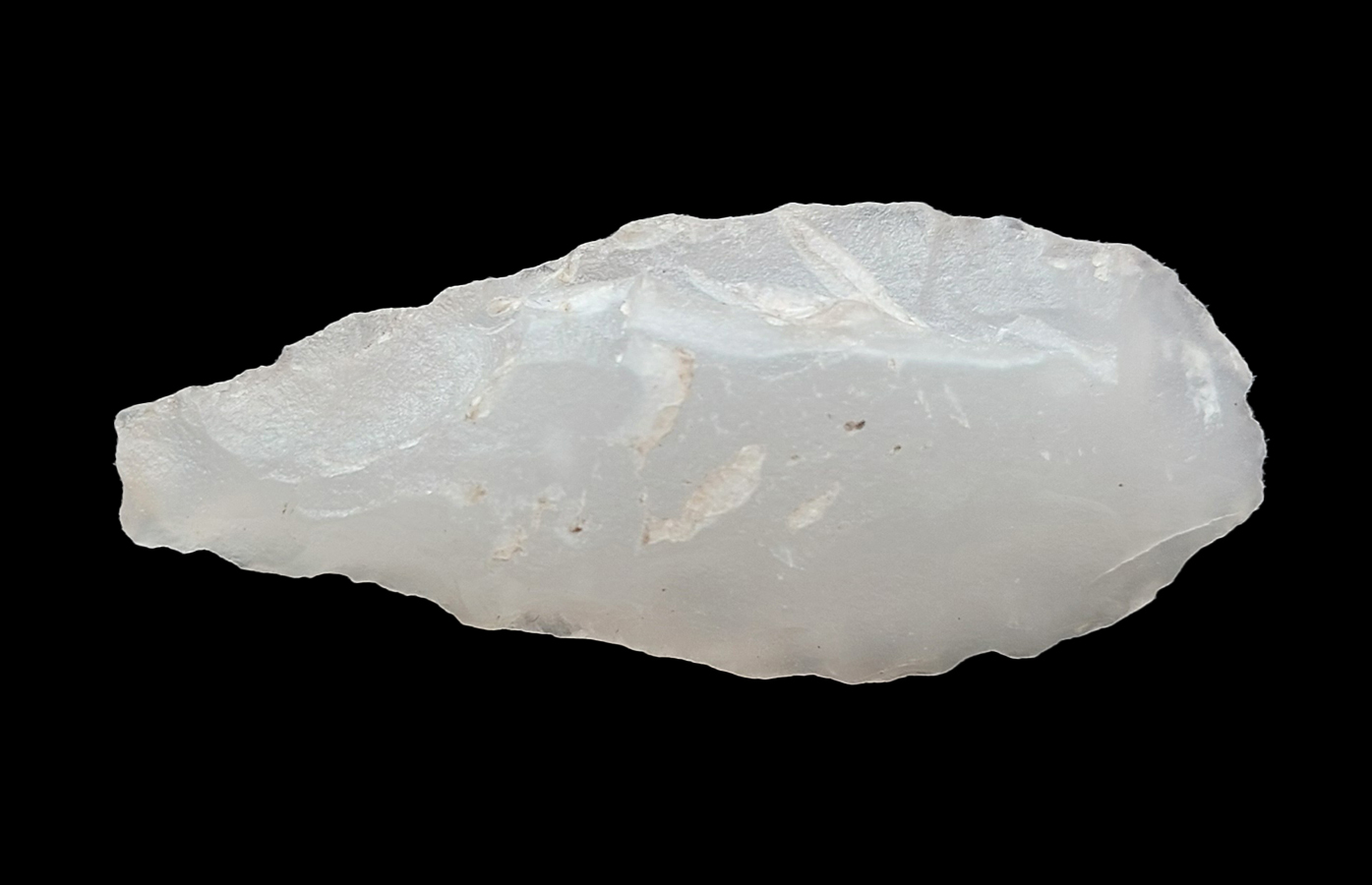Archaeologists from Arkeologerna have uncovered a crystalline arrowhead crafted from quartzite during excavations south of Skellefteå in northern Sweden.
The discovery was made during a study of the Hedkammen ridge, revealing over 300 archaeological features and structures, including hearths and cooking pits, isolated stone clusters, and finds of pottery and worked stone.
Hedkammen ridge (part of the Skellefteåsen ridge), was formed by melting waters on an ice sheet that deposited sand and gravel material. This provided prehistoric communities with a source for constructing ancient burial mounds.
Preliminary studies indicate several periods of human activity, with the earliest dating to 500 BC and the latest the late Middle Ages. Many of the structures are positioned near a natural harbour some 2,500 years ago, possibly used for pulling up boats or as ritual gathering points.
Around 150 artefacts have been recovered, such as a collection of worked stone materials, ceramic shards, charred bone, and flint worked objects made of quartz and quartzite not indigenous to the region.
Among the finds is a flint flake that appears to have been struck from a polished axe, suggesting that imported flint tools, possibly from Denmark, were reused or repurposed at the site during the Late Bronze or Early Iron Age.
A standout discovery is a crystal bifacial arrowhead made of pure white quartzite, a non-foliated metamorphic rock prized for its strength in tool production since prehistoric times.
The excavation is a joint collaboration between Arkeologerna, Västerbottens Museum, and Skellefteå Museum.
Header Image Credit : Arkeologerna
Sources : Arkeologerna







